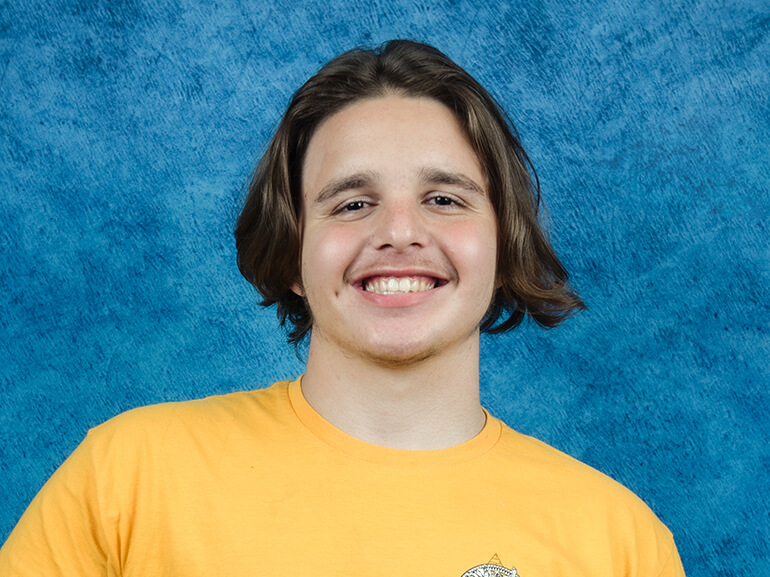Blerim's Story

Spinal cord stroke
Blerim Bauta was, by his own account, a pretty typical student at Boswell High School. He enjoyed playing basketball, hanging out with friends and, as a junior, was already looking forward to graduation. All that changed when Blerim was diagnosed with an aortic aneurysm – an abnormal bulge in his aorta, the large artery that carries blood from the heart through the chest and torso.
Blerim underwent open-heart surgery to successfully repair his aorta, but there were complications. He lost a lot of blood during the procedure and that led to a stroke in his spinal cord. The stroke caused kidney failure, nerve damage and also left Blerim paralyzed in his left arm and in both legs.
At just 16 years old, Blerim was facing more challenges than a lot of people see in a lifetime. “I couldn’t move...I was unable to walk, stand or even sit up. I had problems with my speech because my vocal cords were damaged. I needed help to shower and get dressed, and I had to be catheterized. I had to be positioned every two hours to avoid developing what they call pressure wounds.”
Blerim underwent inpatient rehabilitation at Cook’s Children's Hospital in Fort Worth where he would begin the long road to recovery. He worked hard to build his core strength, improve his speech and gain the skills and strategies to perform basic activities of daily living (ADLs), including self-care. As he continued to progress, his doctors agreed it was time for Blerim to advance his treatment and recommended the Day Neuro Program at Baylor Scott & White Institute for Rehabilitation (BSWIR) – Fort Worth.
From day one, Blerim had clear goals: “I wanted to be able to stand for extended periods of time, walk with a rolling walker or a cane and perform all my ADL’s without any assistance.” Blerim, who was keeping up with his studies, added that his ultimate goal was, “to be able to walk across the stage at my high school graduation on my own.”
In the Day Neuro Program, Blerim made amazing strides – literally. His physical therapist provided strengthening, balance and gait training exercises that helped Blerim quickly progress from a wheelchair to a rolling walker to a four-wheel walker and eventually to just a four-prong cane. Among his favorite therapies was electrical stimulation, a technique that sends an electrical current into the muscles to promote movement. Similarly, through intense occupational therapy, Blerim developed strength, skills and strategies to be independent in his daily activities and learned to adapt certain tasks to his abilities. He was even able to return to driving.
He credits his recovery to constant support of his family and his BSWIR team, who “pushed me to work hard and kept me motivated on the hard days. They never let me give up.”
A year and a half after his ordeal began, Blerim was able to graduate with his class, proudly walking across the stage on his own to accept his diploma. When asked what advice he might offer, Blerim said, “Work hard, never give up and you will see the results.”